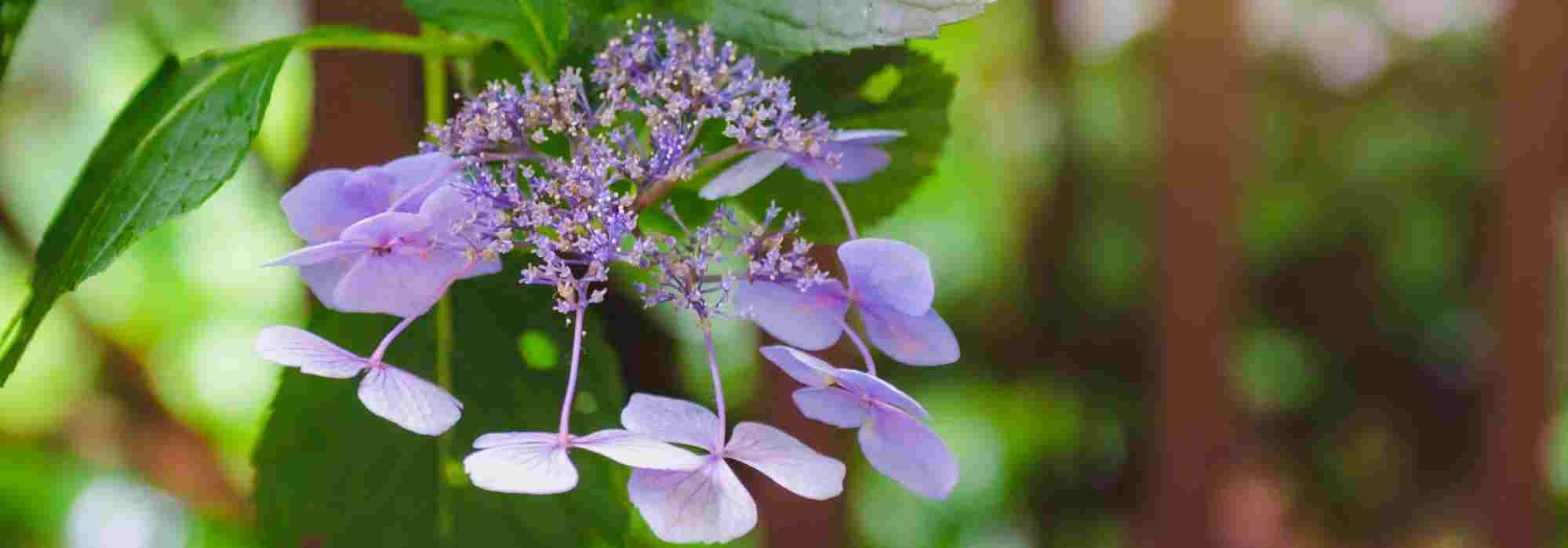
Hydrangeas like no other
A selection of lesser-known hydrangeas to discover
Contents
When Hydrangeas are mentioned, one almost immediately pictures large pink or blue balls of the iconic shrub of Brittany. Hydrangea macrophylla with large leaves and very colourful spherical inflorescences is widespread in our gardens. About twenty years ago, the arrival on the market of American Hydrangeas, the Hydrangeas arborescens, and Asian Hydrangeas, the Hydrangeas paniculata, with their huge conical or rounded inflorescences, considerably expanded and renewed the microcosm of Hydrangeas.
But many lesser-known species of Hydrangea, with slightly less showy colours, reveal shady corners of the garden with great poetry and lightness. Often originating from foothills of the Himalayas or from China, these under-the-radar Hydrangeas deserve more recognition: they are called aspera, involucrata, heteromalla… They too now benefit from hybridization to offer increasingly sought-after, even unusual, cultivars. Used sparingly, or to create generous beds across large spaces, they work wonders in naturalistic or exuberant gardens.
Come and discover these Hydrangeas like no other; you may fall under their spell or become completely hooked!
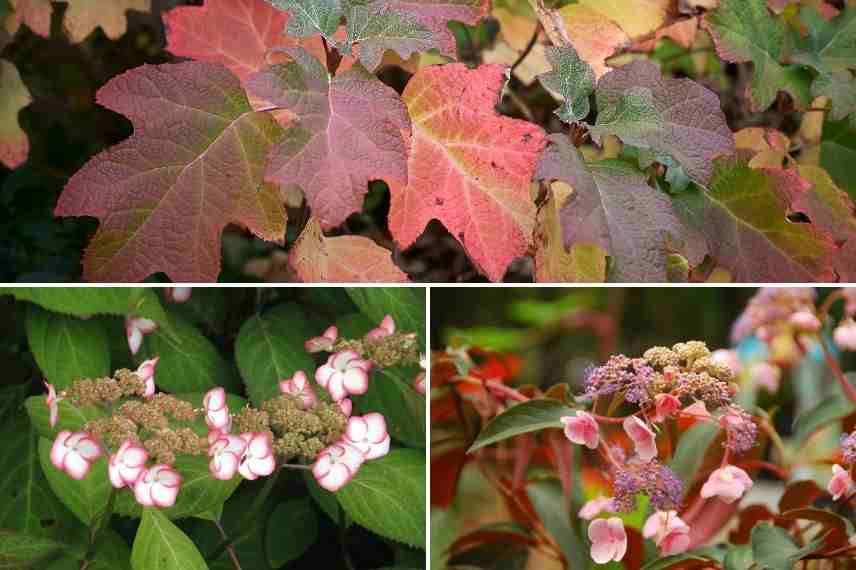
Hydrangea quercifolia, Hydrangea serrata ‘Kiyosumi’ (© Peganum); and Hydrangea aspera ‘Hot Chocolate’
→ Discover our complete guide on Hydrangeas
Hydrangea quercifolia: oakleaf hydrangeas
These are probably the Hydrangeas best known in this selection, as they are seen in many parks and gardens… which led garden centres to offer them more widely to the general public. The Hydrangea quercifolias are native to America like the arborescens. Introduced to Europe from the early 19th century, they produce a very handsome flowering with long conical white or cream panicles, and are notable for foliage that surprisingly resembles oak leaves. The very lobed, dark green leaves take on magnificent orange, red to bronze colours in autumn, before falling. They remain relatively small (often 1.25 m tall) compared with other Hydrangeas in this selection. Other particularities and advantages of these oak-leaf Hydrangeas: they are extremely hardy, develop attractive bark with age, tolerate sunny positions and slightly calcareous soil… so they can really grow anywhere (but avoid deep shade!).
Some varieties to recommend : ‘Alice’, one of the largest, whose caramel-coloured autumn foliage is spectacular, and the popular ‘Snow Queen’, one of the few with cream panicles held proudly upright, which turn pink in autumn.
→ Learn more about oakleaf hydrangeas with Jean-Christophe’s article on our blog, and our range of Hydrangea quercifolia.
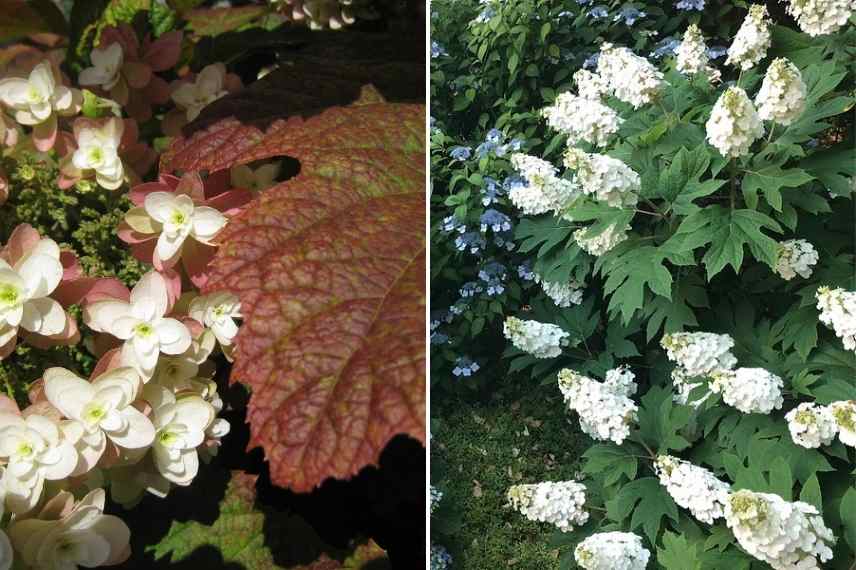
Hydrangea quercifolia in autumn (© Wendy Cutler), and Hydrangea quercifolia ‘Alice’ (© Cultivar 413)
Read also
Hydrangeas: planting, pruning and careHydrangea aspera: villous
With this qualifier, it is easy to see that the Hydrangea aspera have a slightly rough aspect, which applies to their foliage and gives a matt, velvety character that is particularly decorative. If this narrow, silky and dentate foliage is a rather dark green, the flowers appear grouped in flattened umbels, made up of sterile flowers at the edges and fertile ones in the centre, very graceful. They range in colour from pale blue to mauve or violet depending on soil pH. Hydrangeas aspera require sufficient shade to thrive. They are therefore rather best suited to understorey settings, where shade is cool but bright. They are particularly large (expect about 3 m in height and spread at ripeness for most varieties), bushy and rounded in form. They produce late-season flowering, starting in August and lasting until October. Discovered in Nepal, they are hardy, tolerant of temperatures as low as -20 °C, which makes them bushes for large-scale planting or understorey capable of colonising upland regions.
Some varieties to recommend : the classic Hydrangea aspera ‘Sargentiana’ with very large leaves (15 to 20 cm long) and superb domed violet flowers, and ’Kawakami’, a striking variety with bicoloured inflorescences, purplish-red edged with white.
→ Discover our range of Hydrangeas aspera
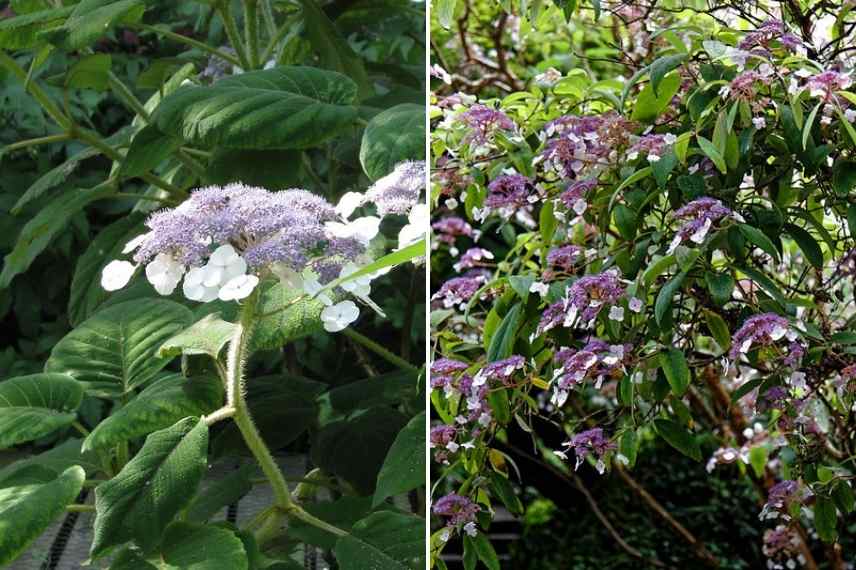
Hydrangea aspera ‘Villosa’ : flowers and velvety foliage (© Peganum). On the right, silhouette (©Leonora Enking)
Discover other Hydrangeas
View all →Available in 1 sizes
Available in 1 sizes
Available in 1 sizes
Available in 1 sizes
Available in 1 sizes
Available in 2 sizes
Available in 2 sizes
Available in 2 sizes
Available in 1 sizes
Available in 2 sizes
Hydrangea involucrata: peony-budded hydrangeas
Unlike large Hortensia aspera, Hydrangea involucrata are among the smallest, measuring between 0.8 m and 1 m, which allows them to be planted almost anywhere, even in containers and in borders. They have especially a delightful trait: their flower buds could easily be mistaken for peonies. When in flower, they form broadly rounded corymbs, 12 to 15 cm in diameter, made up of numerous fertile blue or pink flowers and larger sterile flowers, white or pale blue. Involucrata flower in mid to late summer, some until the frosts. Native to Japan and Taiwan, they tolerate very cold temperatures down to −25°C. Their foliage is also noteworthy: large, corrugated, soft and villous like aspera, it adds a sense of lush abundance. They need a shady, cool position.
Some varieties to recommend: ‘Late Love’, late, helps extend flowering of a bed dedicated to Hydrangeas; it forms a particularly compact cushion, ‘Yoraku Tama’ with superb double inflorescences, or ‘Yokudanka’ with subtly salmon-pink flowers…
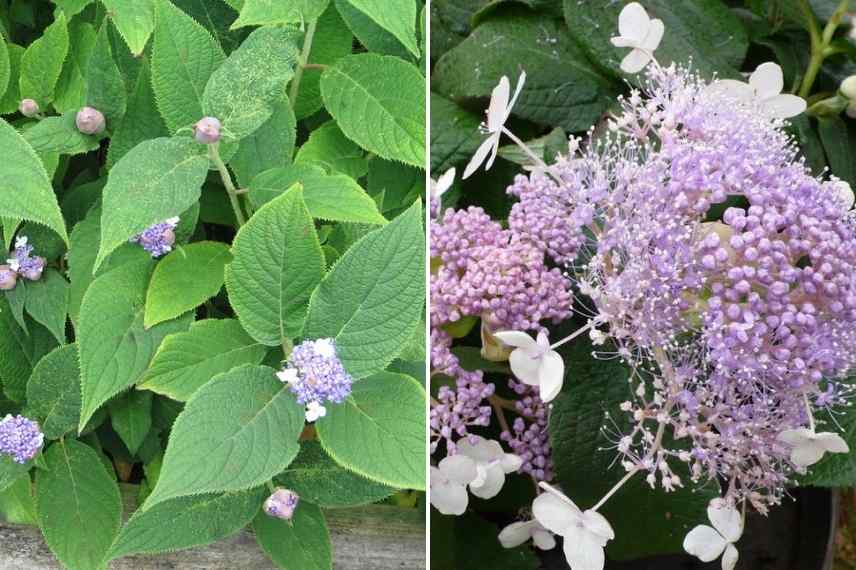
Hydrangea involucrata (© Peganum) and Hydrangea involucrata ‘Late Love’
Read also
Hydrangeas: how to choose them?Hydrangea heteromalla: giants from the Himalayas
With the Hydrangea heteromalla, you enter a sphere of enthusiasts and collectors wishing to extend and complete borders with spectacular, rare varieties. Hydrangea heteromalla originate from the Himalayas, Nepal and north-east China. They are truly dreamlike with their exceptional dimensions, between 2 and 3 m in height, some reaching 5 m and even up to 7 m! These giants therefore belong in large spaces, natural-style gardens, which they enhance with their very wild appearance. Foliage is slightly rough, elongated and pointed, and their early flowering in the season (from late May) is always white or slightly cream, turning pink by late summer. Of slow growth, they lend themselves to use as a solitary specimen or as a backdrop in a park, where they add a great deal of exoticism. Final notable asset: they are among the hardiest in the large « family » of Hydrangeas, thriving both on plains and in mountains.
Some varieties to recommend : ‘Nepal Beauty’ with superb, huge flowers and orange petioles, or ‘Willy’, which takes on deep pink tones in autumn.
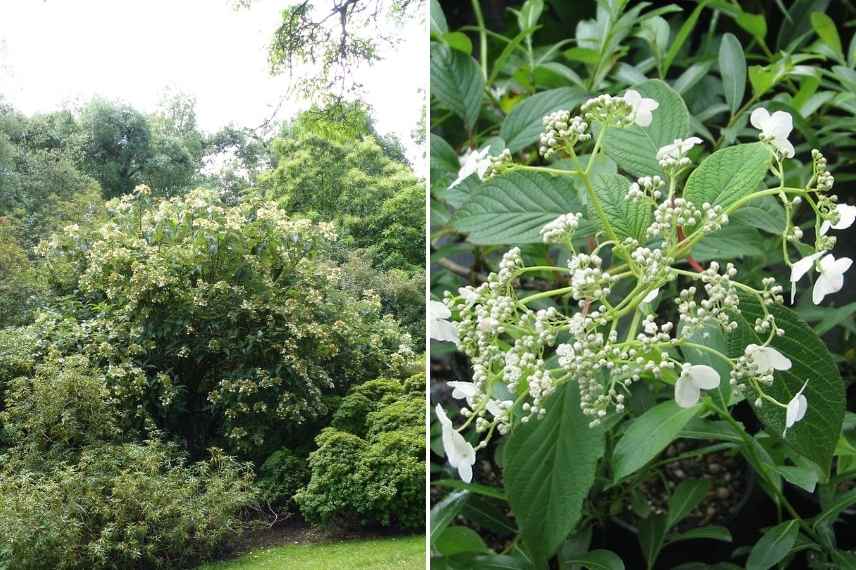
Magnificent silhouette of the Hydrangea heteromalla. On the right, flowering of cultivar ‘Snow Cap’ (© Peganum)
Hydrangea serrata: dentate hydrangea, or 'lacecap'
Here is another Hydrangea species, somewhat easier to find than the Hydrangeas mentioned above. The Hydrangea serrata are characterised by strongly veined, dentate foliage, hence their other sometimes-used name dentate hydrangea, and by their particularly delicate inflorescences. They are medium-sized bushes, between 1 m and 1.50 m, with a bushy habit. Their leaves are large, often turning yellow, red or brown in autumn. They are among the first to flower in the large ‘family’ of hydrangeas, some even proving perpetual and flowering again in late summer. The inflorescence is a corymb, often flat or slightly domed. In terms of flower colours, this species displays the full chromatic palette of Hydrangea macrophylla: whites, pinks, reds, blues, mauves or violets, which often change during the season. Of Japanese origin, they retain the excellent hardiness that makes them bushes to plant across France, in shaded to semi-shaded situations.
A few varieties to recommend : ’Kiyosumi’ a charming variety with white flowers edged with bright pink, ‘Tiara’ very floriferous, covered in lavender-blue and pink flowers, with interesting purplish-brown foliage in summer.
→ Discover our full range of Hydrangea serrata
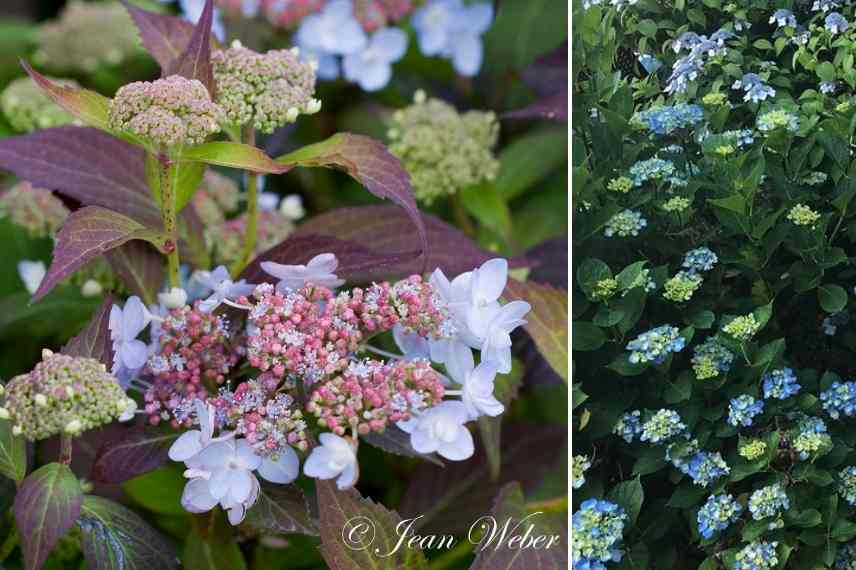
Hydrangea serrata ‘Tiara’ (© Jean Weber), and ‘Blue Bonnet’ (© Michele Dorsey Walfred)
Find out more
I could also have mentioned in this article Hydrangea anomala, climbers, and Hydrangea angustipela, scented…
I couldn’t recommend highly enough Ronan Garin’s excellent work, ‘The Encyclopedia of My Most Beautiful Hortensias and Hydrangeas’, which I discovered at his fabulous nursery in Morbihan, devoted to hydrangeas. This book lists nearly 350 varieties; it’s a bible to have on your bedside table… and a place to visit if you happen to be near the pretty medieval town of Josselin.
« Hortensias et Hydrangeas d’aujourd’hui », another very comprehensive book by Thierry de Ryckel, published by Ulmer, lists and describes particularities of botany while taking care to comment on varietal developments. More information in Virginie’s article.
- Subscribe!
- Contents
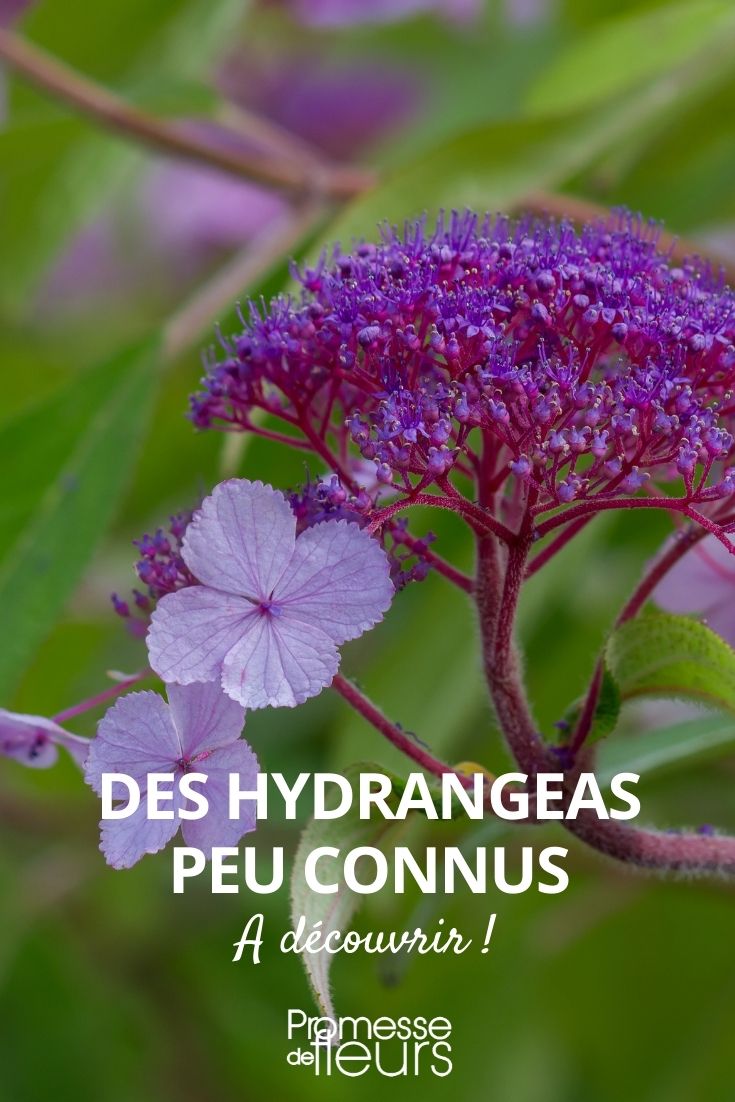































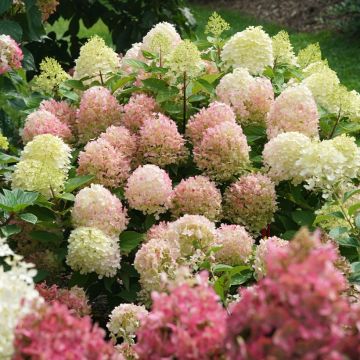
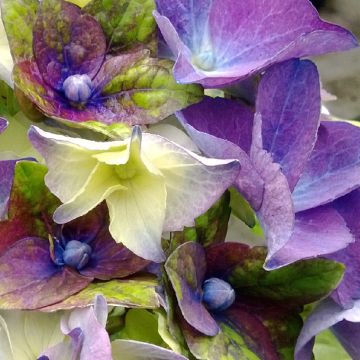
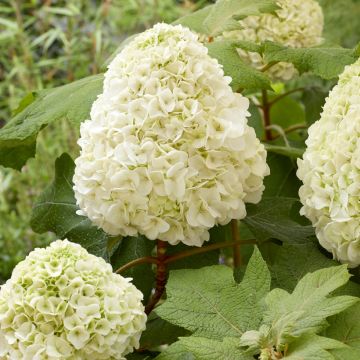

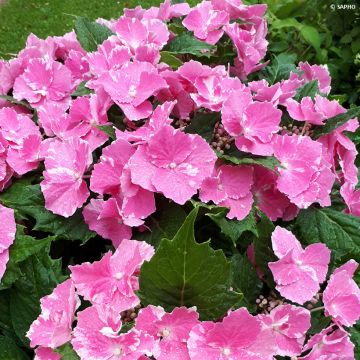
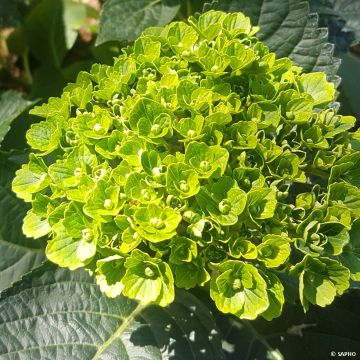
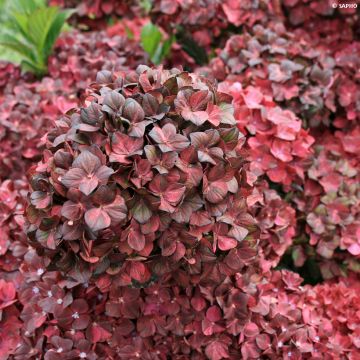
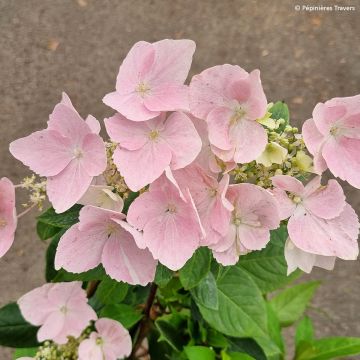
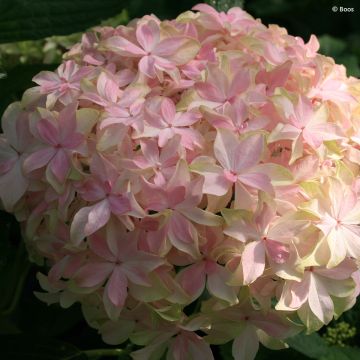
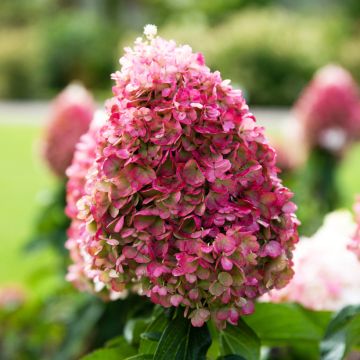
Comments